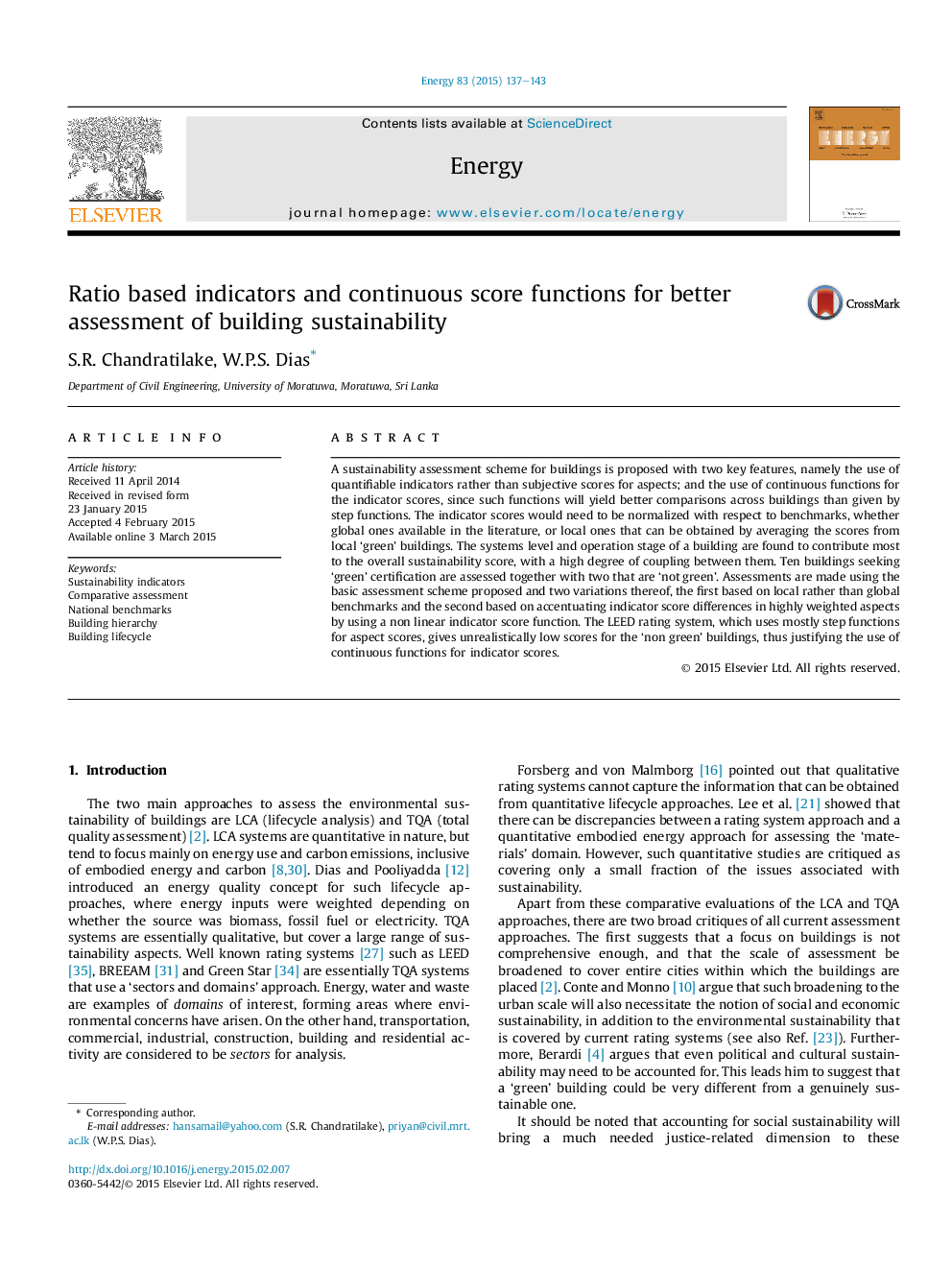| Article ID | Journal | Published Year | Pages | File Type |
|---|---|---|---|---|
| 8074750 | Energy | 2015 | 7 Pages |
Abstract
A sustainability assessment scheme for buildings is proposed with two key features, namely the use of quantifiable indicators rather than subjective scores for aspects; and the use of continuous functions for the indicator scores, since such functions will yield better comparisons across buildings than given by step functions. The indicator scores would need to be normalized with respect to benchmarks, whether global ones available in the literature, or local ones that can be obtained by averaging the scores from local 'green' buildings. The systems level and operation stage of a building are found to contribute most to the overall sustainability score, with a high degree of coupling between them. Ten buildings seeking 'green' certification are assessed together with two that are 'not green'. Assessments are made using the basic assessment scheme proposed and two variations thereof, the first based on local rather than global benchmarks and the second based on accentuating indicator score differences in highly weighted aspects by using a non linear indicator score function. The LEED rating system, which uses mostly step functions for aspect scores, gives unrealistically low scores for the 'non green' buildings, thus justifying the use of continuous functions for indicator scores.
Related Topics
Physical Sciences and Engineering
Energy
Energy (General)
Authors
S.R. Chandratilake, W.P.S. Dias,
